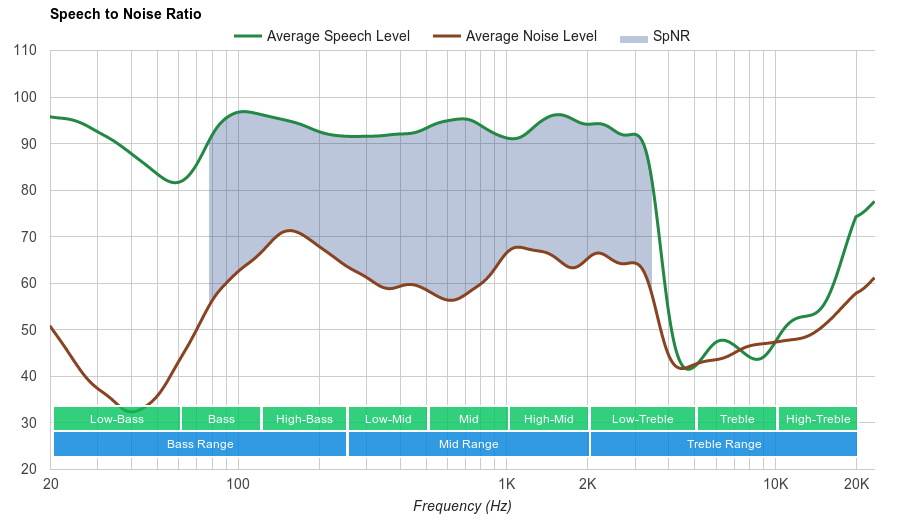- Table of Contents
- Intro
- When it matters
- Our Tests
- What is not included
- Comments
One of the key aspects of the microphone performance of headphones is noise handling. Since background noise is almost always present in daily life, microphones need to be able to separate speech from unwanted signals and reject unwanted noise.
This test is part of our series of tests of the microphone of headphones.
The closer the microphone is placed to the source (mouth), the higher the ratio of speech level to the background noise level will be. That's why boom microphones tend to do best at noise handling. Additionally, a microphone with a directional pattern such as cardioid or figure-8 rejects the sound coming from certain angles and accepts the sound coming from other angles. Beamforming can have similar effects as directionality. However, directionality tends to be achieved in hardware, whereas beamforming always has a software component. AGC is also a software process which reduces the amount of perceived noise, by reducing the input level when there's no speech present.
Test results
When it matters
If a microphone is going to be used in a noisy environment, such as a busy street, a loud office, or on the bus, then good noise handling is required for the other person to be able to hear and understand you easily. Otherwise, your voice may be drowned out by the noise around you, and the speech won't be intelligible to the listener.
Our Tests
Testing Procedure
Our isolation tests are performed in a 6' x 3' x 3' isolation box. The box is partially treated with bass traps and absorbers, and an M-Audio BX8 Carbon speaker is placed at one end of the box with the HMS (Head Measurement System) being positioned at the other end. The speaker is positioned at an angle in order to create a balance of direct and diffuse sound.
There are two test signals used in our SpNR test. The first one is played through the mouth and is a pink noise (random noise with equal energy per octave) limited between 20Hz - 20KHz. This is identical to the test signal used in our recording quality test. The second signal is a similar pink noise but played through a speaker, about 1 meter away. This is to simulate background noise.
The target for the mouth signal is the response of a measurement microphone placed 5cm away from our dummy head’s mouth, calibrated to 94dB SPL.
The target for the speaker signal (background noise) is the response of the same measurement microphone 5cm away from the dummy head's mouth calibrated to 70dB SPL. However, this response is captured at 3 different angles and treated as compensation curves in order to remove the "room modes" of our isolation box from the measurements.
For testing, first, the microphone level is calibrated with the mouth signal to read 94dB SPL, and then the response of the background noise (speaker signal) is captured at the calibrated level. This ensures that all the microphones are tested at the same level. The quieter the speaker signal relative to the mouth signal, the higher the SpNR.
Speech to Noise Ratio
SpNR is the level difference between the wanted signal (speech) and the unwanted signal (background noise). It is calculated by measuring the difference in amplitude between the microphone's average frequency response and the microphone's average noise response. The bigger the difference, the higher the SpNR.
The most important factors in achieving a good SpNR are the distance from the source and polar pattern, followed by beamforming and automatic gain control (AGC). Therefore, microphones with a boom that can be placed very close to the mouth tend to achieve the highest SpNRs. Conversely, in-line microphones on a long cable tend to get mediocre speech to noise ratio values, mainly due to their distance from the mouth.
Beamforming and AGC can also be effective in improving noise handling. However, our test in its current iteration may not be able to catch all of the clever software tricks that Bluetooth headphones perform. But we have already made audio recordings of all of our microphones using a variety of test signals which we can process at a later date to assess the beamforming and AGC performance of microphone more thoroughly.









